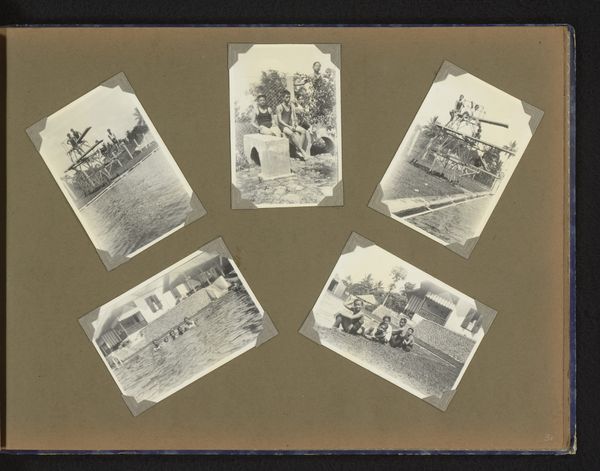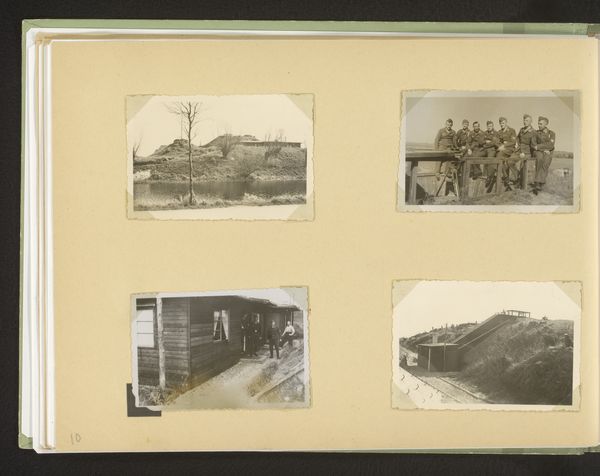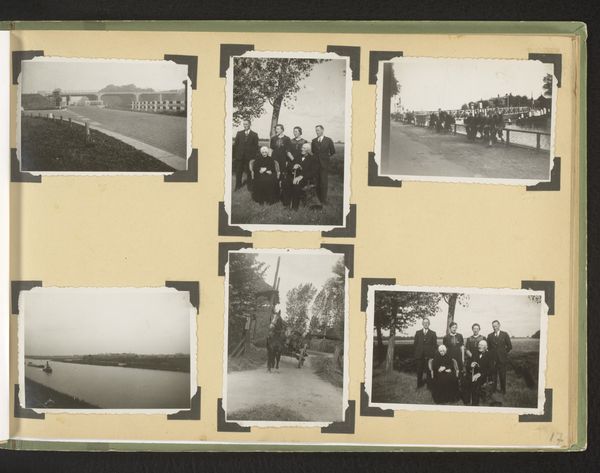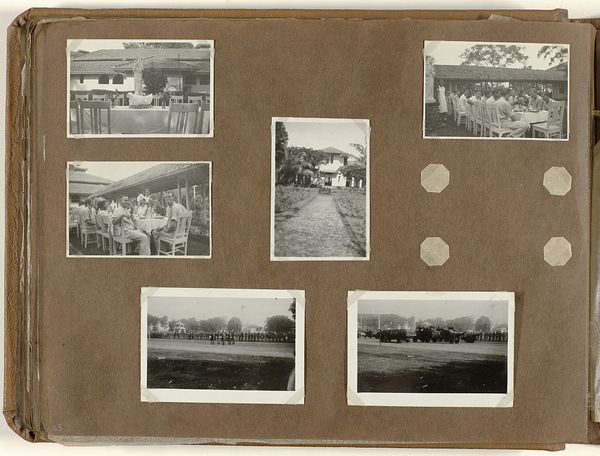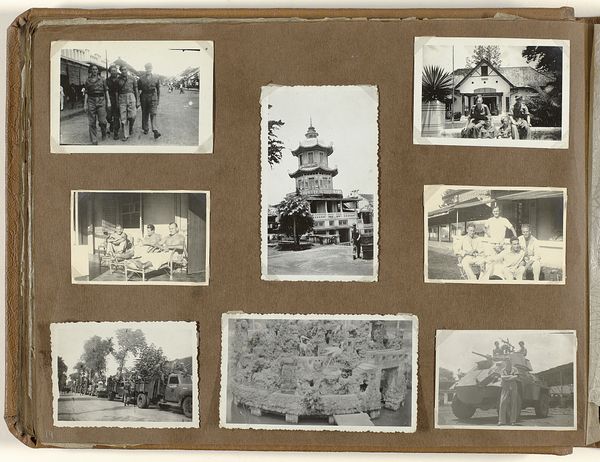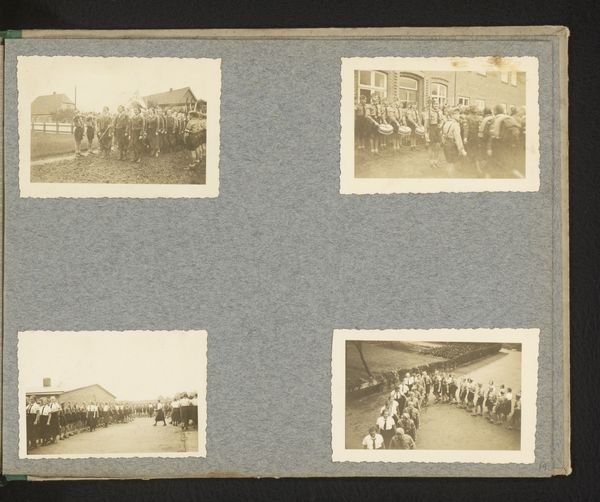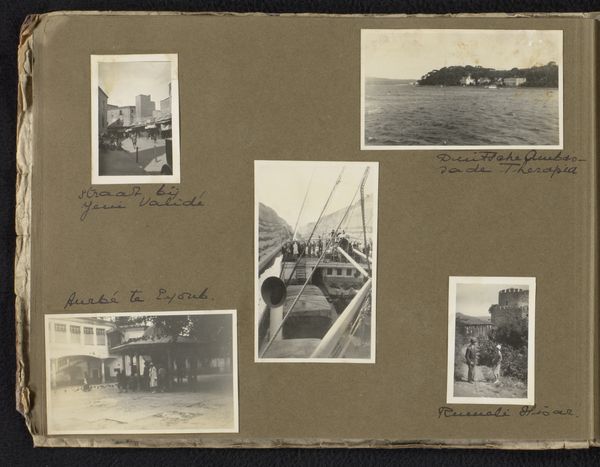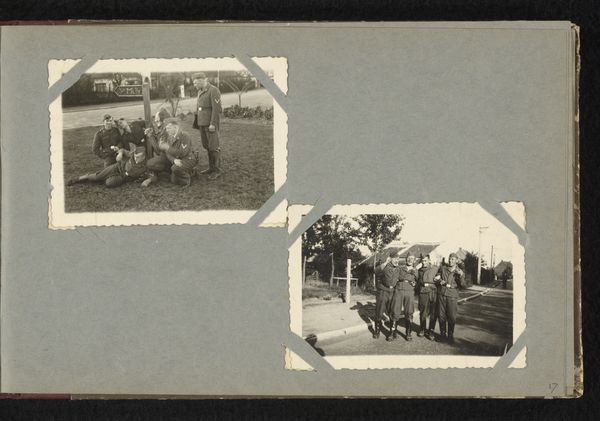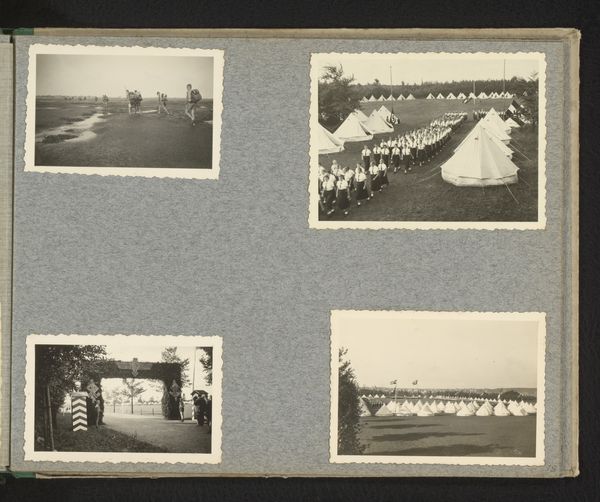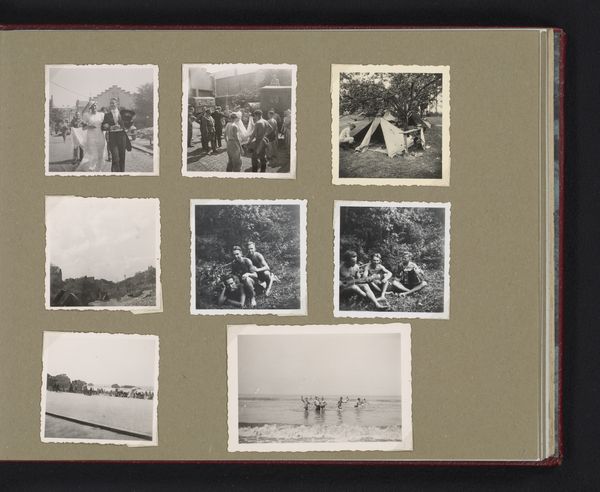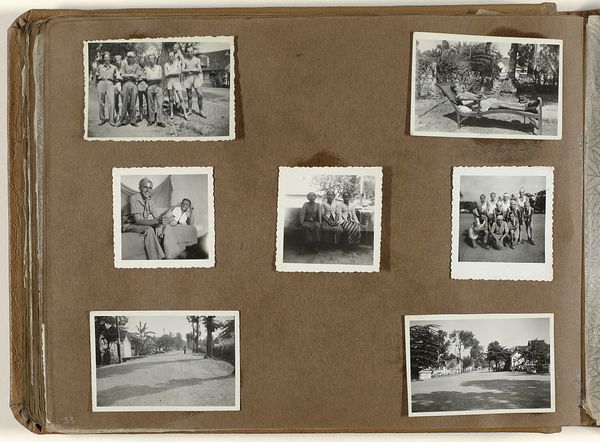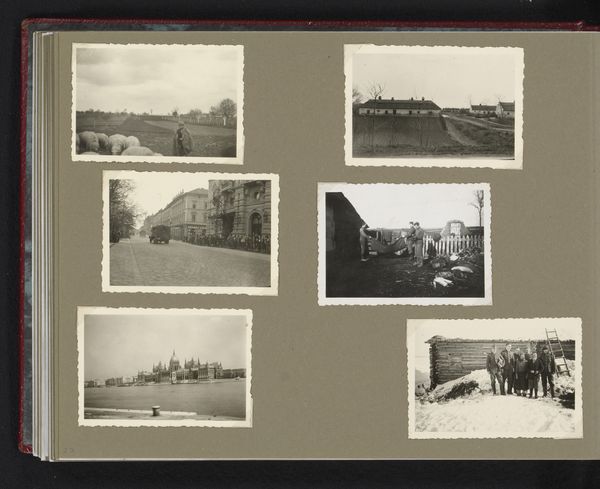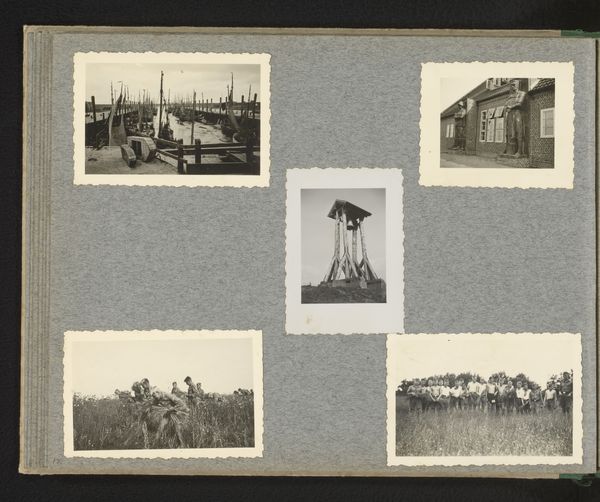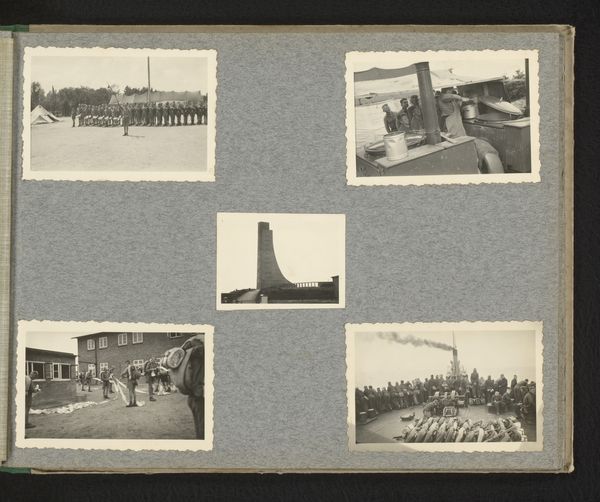
print, photography, gelatin-silver-print
# print
#
photography
#
historical fashion
#
gelatin-silver-print
Dimensions: height 65 mm, width 90 mm, height 207 mm, width 260 mm
Copyright: Rijks Museum: Open Domain
Curator: Here we have a fascinating photographic print dating from between 1935 and 1938, titled "Militaire ceremonie." It appears to be an album page with several images documenting some kind of military event. Editor: It has an interesting documentary feel. Stark and grainy, it gives off a distinctly pre-war atmosphere, full of that impending tension. The geometric framing adds to that sense of rigid structure. Curator: Indeed. These are gelatin-silver prints, so the tonal range is quite distinctive, ranging from deep blacks to bright whites. We see formations of soldiers, mounted officers, and even a marching band, suggesting a formal occasion. Notice the framing of each individual shot, how the artist positions the action within rectangular snapshots with jagged edges. Editor: It's like looking into separate boxes of contained movement. Each photo operates as a distinct scene, and the placement in a series gives rhythm to what is actually a collection of pauses. Look at the sharp contrast, the lines of men almost blend into the background. The formality becomes quite unsettling. Curator: I agree, there's a detachment at play. What interests me is the artist's seeming intention, the way in which a mundane record of daily life is transformed into an aesthetic commentary. By focusing on the composition and framing, these images transcend their immediate subject matter. I also find that these shots could almost be documentation that later becomes propagandistic due to where this album eventually resided during WW2, however that wasn’t necessarily the intention of the artist originally. Editor: Perhaps a desire to impose order, mirrored in the photograph's composition? I like the idea of accidental or retrospective messaging. Thinking about the time they were created, there is a sense of inevitable march here. They force us to confront the raw, constructed nature of authority and how these tools are used. What do you think makes this work stand out, in retrospect? Curator: The way it captures the visual language of power, the clean lines and formations create that sense, not with any judgement, simply with detached precision. As if they’re letting the images tell the story of a certain cultural momentum. It gives an unsettling clarity to history, making you stop to notice that at a given point this type of formation or the power it signified were everyday life. Editor: Yes, something is deeply unnerving and fascinating in equal measure. The way visual structures can echo underlying systems.
Comments
No comments
Be the first to comment and join the conversation on the ultimate creative platform.
